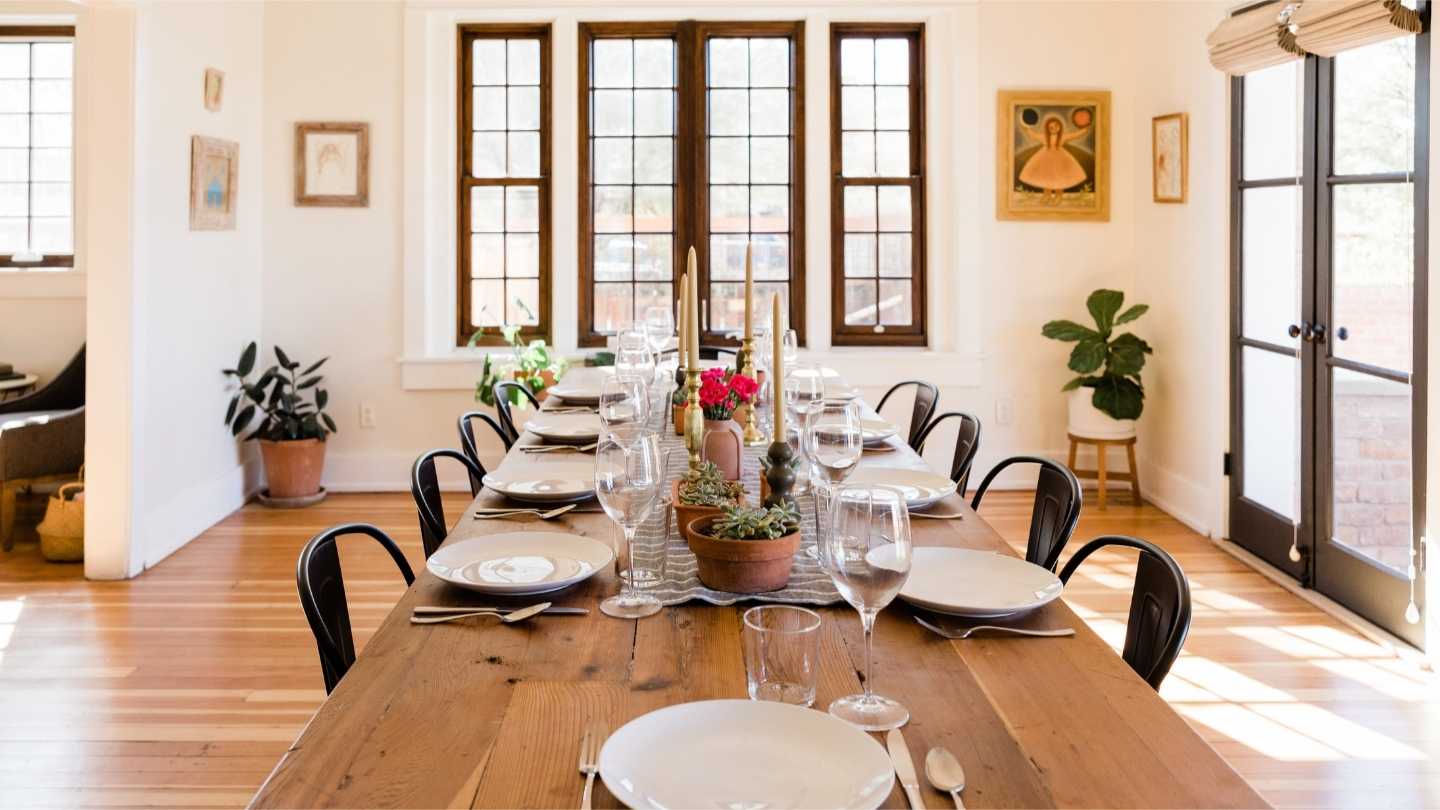Are Formal Dining Rooms Coming Back? A Complete Guide
For decades, the formal dining room was declared “dead”—a relic of fussy entertaining in the era of open-plan great rooms and eat-on-the-sofa nights. But today, clients are asking architects to re-add dining rooms, real-estate listings spotlight them, and designers are embracing moody palettes, statement lighting, and scaled tables meant for lingering. So, are formal dining rooms coming back? Short answer: yes—just not in the same way. The new dining room is intentional, flexible, and more user-friendly than before.
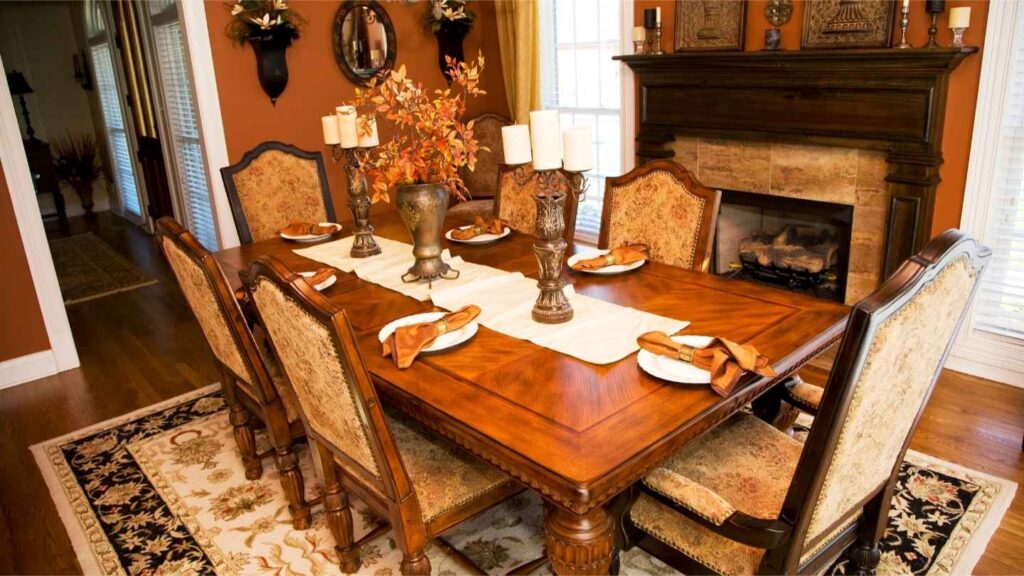
Why the Dining Room Faded (and What’s Changed)
Then:
- Open-plan living promised connection and convenience: cook, chat, and watch the game all at once.
- Lifestyle shifts (long commutes, after-school schedules, solo screens) meant fewer nightly sit-down dinners.
- Square-footage pressure: homeowners repurposed “stiff” dining rooms into offices, playrooms, or libraries.
Now:
- Desire for boundaries: After years of doing everything in one big box, households crave rooms with purpose. A defined dining room helps separate cooking mess from eating and conversation.
- Wellness and ritual: People are rediscovering the mental + relational benefits of screen-free meals. A dining room becomes an anchor for weekly rhythms—Sabbath suppers, Sunday brunch, birthday dinners.
- Entertaining is back: From intimate tasting menus to potlucks, hosting feels special again. A dining room allows drama (lighting, art, tablescapes) that might feel “too much” in an open kitchen.
- Acoustic and visual relief: Open plans can be loud and visually busy. A door—or even a cased opening—reduces noise and restores calm.

Who Actually Benefits From a Formal Dining Room?
- Families who host (holidays, game nights, kids’ projects that need to spread out).
- Cooks who prefer a “ta-da” reveal instead of dining beside prep mess and dishes.
- Collectors and design lovers who want a space for statement lighting, art, and heirloom furniture.
- Hybrid workers needing overflow meeting space by day and dining by night (with smart storage—details below).
- Resale-minded owners in markets where traditional floor plans are prized (many historic districts and suburban move-up neighborhoods).
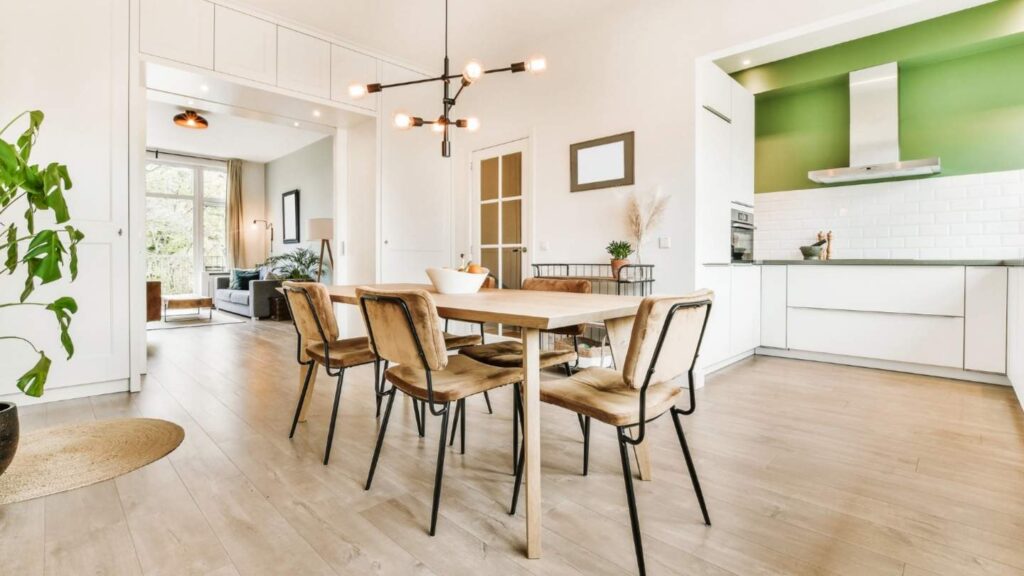
The Modern Dining Room: 9 Rules That Make It Work (and Used)
- Scale the Table to the Room
Leave ~36–44 inches from table edge to walls or furniture for comfortable circulation. Round or oval shapes soften tight rooms; extension tables offer flexibility. - Upgrade Lighting (Layered and Dimmable)
- Chandelier/pendant centered on the table (hang ~30–36 inches above tabletop).
- Dimmers to shift from homework brightness to candlelit dinners.
- Sconces or picture lights for mood and art.
- Build Storage Into the Architecture
A shallow built-in buffet or wall of cabinetry hides linens, candles, chargers, board games, and the “hosting kit” (extra flatware, napkin rings, vases). Bonus: integrates a hidden bar or coffee station. - Choose Performance Surfaces
- Tables: sealed wood, oak with a hardwax-oil finish, quartzite, or ceramic-topped tables resist rings and heat.
- Seating: performance fabric, indoor-outdoor textiles, or leather on seat cushions.
- Rugs: flatweave or low-pile performance rugs with rug pad; consider indoor-outdoor for stain resistance.
- Plan Power & Tech (Discreetly)
Floor outlet under the table (for laptops or hot plates during holidays), a framed TV that doubles as art, and concealed speakers for playlists—all without turning the room into a media cave. - Acoustics Matter
Soft window treatments, upholstered seats, a rug, and even a fabric-wrapped pinboard or art panel keep conversation clear and pleasant. - Make It Multi-Functional (Without Looking Like an Office)
Add a slender console that flips to desk mode by day; conceal supplies in drawers. Use closed storage so the room resets to “formal” in 60 seconds. - Create a “Scullery” or Cleanup Buffer (If Space Allows)
A small prep or dish pantry near the kitchen keeps mess out of sight during parties and lets the dining room stay serene. - Give It a Personality
Dining rooms are the perfect canvas for moody paint, grasscloth, mural wallpaper, a dramatic stone fireplace, or sculptural lighting—elements that elevate the experience.
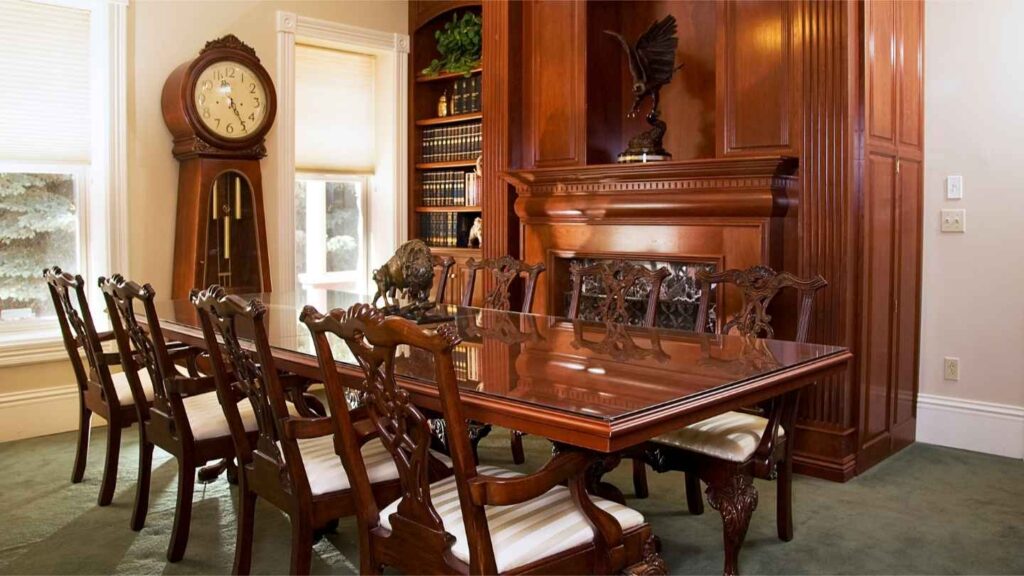
Smart Layouts for Different Homes
- Small Apartments/Condos
Use a banquette against a wall with a round pedestal table to maximize seating. Consider a folding, drop-leaf, or butterfly-extension table. Mirror the opposite wall to amplify light. - Townhouses & Historic Homes
Retain the traditional front parlor / dining progression but widen cased openings for sightlines. Use pocket or French doors to flex between open and closed. - Suburban Homes
Pair a defined dining room with a kitchen breakfast nook. Everyday meals live in the nook; the dining room shines for hosting. - Open-Plan Lovers
Carve a “room” through ceiling treatment (beams/coffers), a large rug, and lighting centered on the table. Add a freestanding étagère or low credenza to imply boundaries.
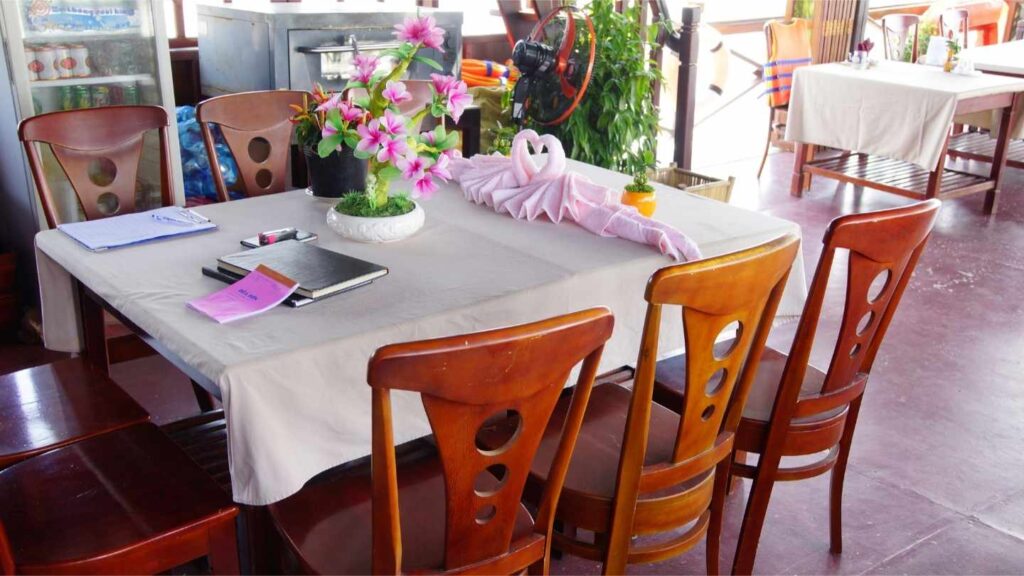
Design Ideas by Style
- Modern Warm: White oak table, upholstered chairs in textured neutrals, linear chandelier, limewash walls, art ledge with ceramics.
- Classic With a Twist: Panel molding, jewel-tone lacquer or matte dark paint, brass chandelier, gallery wall, vintage rug.
- Mediterranean Fresh: Plaster walls, terracotta or sisal rug, iron pendant, linen slipcovered chairs, olive tree in a large pot.
- Minimal Luxe: Stone-topped table, bouclé or leather chairs, overscale monochrome art, hidden buffet, plaster dome ceiling.
Must-Have Shopping Checklist
- Extendable table (seats 6 daily, 10–12 on holidays).
- Eight comfortable chairs minimum (armchairs at the heads for comfort).
- Performance rug sized so chairs stay on the rug when pulled out (often 9×12 under an 84–96″ table).
- Dimmable chandelier + two accent light sources (sconces or buffet lamps).
- Closed storage for linens/serveware + a tray-equipped sideboard for bar setup.
- Tablescaping kit: runners, candlesticks, taper candles, low vases, place cards, and a protected drawer to corral it all.
Must Read: Sharks Are Older Than Trees — The Ancient Survivors of Earth’s Oceans
Must Read: Centralia, Pennsylvania — The Town Burning Underground for Over 60 Years
Must Read: Some Birds Can Sleep While Flying — Nature’s Most Surprising Survival Skill
Must Read: Insects That Can Survive Being Frozen for Years — Nature’s Deep Freeze Survivors
Must Read: Blood Falls in Antarctica — The Glacier That Bleeds Red
Pros & Cons at a Glance
Pros
- Intentional, screen-free gathering space
- Design showcase for art, lighting, and materiality
- Acoustic and visual calm away from kitchen mess
- Potential resale appeal in many markets
Cons
- Requires square footage and furniture investment
- Under-used if you never host or prefer casual meals
- Needs thoughtful storage to avoid becoming a “drop zone”
Pro Tip: If you’re undecided, plan the architecture to flex: wire for a chandelier, include a cased opening, and spec built-ins that work as library storage or buffet. You can live casually now and embrace formality later—without a remodel.
Budget & Renovation Tips
- Cosmetic refresh (fast win): Paint or wallpaper, new chandelier on a dimmer, performance rug, and two buffet lamps.
- Mid-range: Add a built-in buffet with stone top, panel molding, and custom drapery for acoustics and warmth.
- Full renovation: Rework openings for better flow, integrate a scullery, and add architectural lighting (ceiling wash, art lights, floor outlet).
FAQs
Are formal dining rooms really “back”?
Yes—demand is rising, but the function is broader: dining rooms now work as stylish, flexible gathering spaces that host homework, meetings, and celebrations.
Will a dining room improve resale?
In many markets—especially move-up neighborhoods and historic areas—a defined dining room is a plus. Flex-ready architecture preserves options for future buyers.
What if my home is open-plan?
Zone a dining “room” with lighting, a rug, and storage. Consider glass doors or a cased opening to introduce a sense of boundary without losing light.
How do I guarantee we use it?
Make it comfortable (chairs, acoustics), practical (storage, lighting), and beautiful (a reason to sit and linger). Schedule a weekly ritual dinner—even takeout tastes better at a lovely table.
Final Thought
Formal dining rooms are coming back—but smarter. Today’s versions are less about rigid rules and more about intention: a place to gather, slow down, and make everyday moments feel special. Whether you restore a classic room or carve out a defined zone in an open plan, prioritize comfort, storage, lighting, and personality. Do that, and your dining room won’t be a showpiece you dust twice a year—it’ll become the heart of your home.

